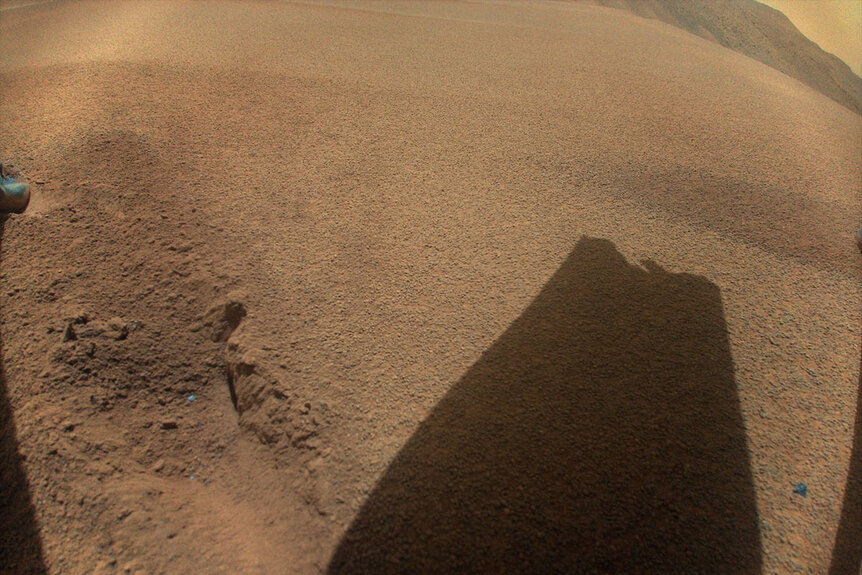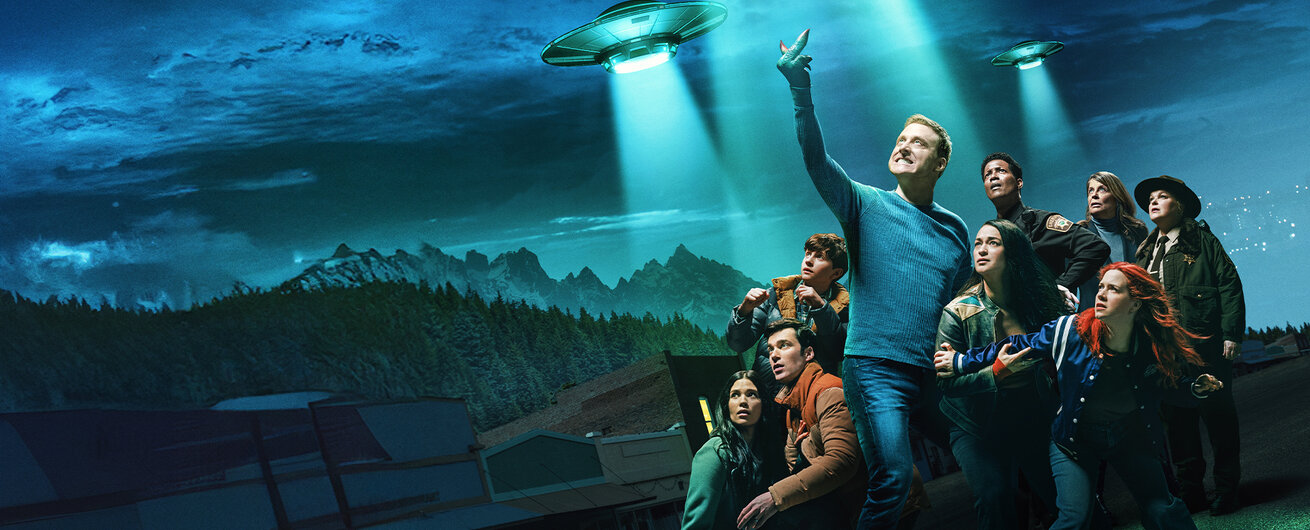Create a free profile to get unlimited access to exclusive videos, sweepstakes, and more!
NASA's Perseverance Spies Damaged Ingenuity Helicopter on Mars
Here lies Ingenuity, the first aircraft to fly on another planet.
Just like Harry Vanderspeigle (Alan Tudyk), the main character of SYFY's Resident Alien (streaming now on Peacock), the Mars Ingenuity helicopter has become stranded on an alien planet. It was never going to come back home, but until recently it was happily flitting across the Martian landscape one historic flight at a time. The helicopter is still alive, so to speak, it’s still upright and communicating with engineers on Earth, but it’s stuck in one spot, no longer able to fly. Its mission has come to an end.
Ingenuity began as a passenger, tucked into the belly of the Perseverance rover on its journey to the Red Planet. It touched down on February 18, 2021, and hunkered in place for a couple of months, getting a feel for the Martian ground beneath its feet, before taking to the admittedly thin air on April 19, 2021. That tenuous liftoff, nearly three years ago now, proved that controlled and powered flight could be achieved on Mars.
The original goal was for Ingenuity to make 5 flights over the course of a month but it far exceeded that initial mission. The first Martian helicopter spent a cumulative 2 hours in the air, crossing a distance of 17 kilometers (10.5 miles), over the course of 72 flights. On January 18, 2024, Ingenuity flew for the last time.
For More on Mars:
Mars’ Jezero Crater Was the Perfect Place for Ancient Martian Life
Could You Really Fake a Mars Landing? The Science of Capricorn One
NASA's Martian Helicopter Photographed Spaceship Wreckage on Mars
Perseverance Snaps Photo of Ingenuity’s Final Resting Place on Mars
In addition to proving that flight was possible on Mars, Ingenuity spent a lot of its time acting as a scout for its terrestrial sibling, Perseverance. Ingenuity would take to the skies and fly up ahead, get the lay of the land, and report back. On its final flight, Ingenuity ascended to an altitude of 12 meters (40 feet) and hovered for about 5 seconds before descending. At about a meter above the surface, the helicopter lost contact with the rover, which acts as a communications relay. Communication was reestablished the following day, but Ingenuity couldn’t take off. A few days later, imagery from the helicopter revealed the problem, at least one of the rotors was damaged.
“The historic journey of Ingenuity, the first aircraft on another planet, has come to end. That remarkable helicopter flew higher and farther than we ever imagined and helped NASA do what we do best – make the impossible, possible. Through missions like Ingenuity, NASA is paving the way for future flight in our solar system and smarter, safer human exploration to Mars and beyond,” said NASA Administrator Bill Nelson, in a statement.
Perseverance is too far away from Ingenuity to rendezvous, and even if it could, there’s not much the SUV-sized robot could do. However, Percy did get to within 450 meters (1,475 feet) of the helicopter on February 4, 2024, (Sol 1052) and took a picture with its Mastacam. You can see Ingenuity perched against the rust-colored sand in the far distance. The Ingenuity team has nicknamed its final resting spot Valinor Hills, evoking the fictional home of the Valar in Tolkien’s legendarium.
Back on Earth, engineers at NASA are using what they’ve learned from Ingenuity to create the next generation of Martian helicopters. Recently, tests were conducted on new rotors which are longer and stronger than those on Ingenuity. The rotors were tested inside NASA’s 25-foot space simulator, a device used to replicate the conditions of space environments to test spacecraft components. Inside, researchers can replicate the temperature, atmospheric composition, and pressure of Mars. They can even replicate gravity through the use of a tether system to offload weight. Larger, stronger rotors could allow mission designers to send heavier helicopters in the future and, hopefully, stand up to the sort of abuse that ultimately landed Ingenuity for good.
Catch Resident Alien, streaming now on Peacock.




































